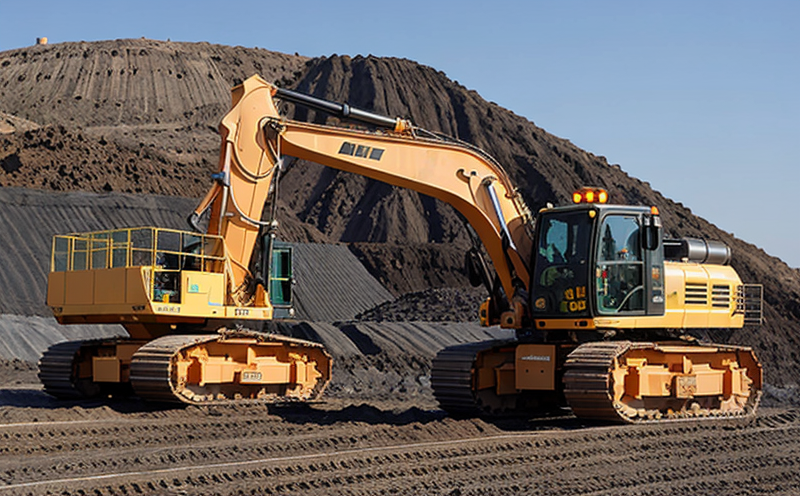ASTM E162 Flame Spread Testing of Machinery Materials
The ASTM E162 standard provides a method to determine the flame spread rating of materials used in machinery. This testing is critical for ensuring that equipment and components meet fire safety standards, which are particularly important in high-risk environments such as mining operations.
In the context of mining equipment and machinery, fire safety is paramount due to the volatile nature of some mining sites and the presence of combustible materials like diesel fuel. Flame spread testing helps ensure that any exposed or encapsulated materials used in mining machinery do not contribute to a rapid increase in flame intensity during a fire scenario.
The ASTM E162 test involves placing a specimen under controlled conditions where it is subjected to an open flame. The rate at which the fire spreads along the surface of the material is measured and recorded as a flame spread index (FSI). This value provides critical insights into how quickly the material will contribute to a fire's growth.
The testing process for ASTM E162 involves several key steps:
- Preparation of the specimen according to the standard specifications.
- Positioning the specimen in a specially designed flame spread apparatus.
- Ignition of the specimen using controlled conditions per the standard.
- Measurement and recording of the flame spread rate.
The testing apparatus used for ASTM E162 is designed to ensure consistent results. It consists of a frame that holds the specimen, an ignition source, and sensors to measure temperature and flame spread. The standard specifies the type of igniter and the distance between the specimen and the source.
Once the test has been conducted, the results are analyzed to determine if the material meets the required flame spread rating. This information is crucial for quality managers and compliance officers as it helps ensure that mining equipment complies with fire safety regulations.
| Standard | Description |
|---|---|
| ASTM E162 | The standard method for determining the flame spread of non-combustible materials. |
Applied Standards
The ASTM E162 flame spread testing is based on a series of international standards that ensure the consistency and reliability of test results. These include:
- ASTM E162: Standard Test Method for Flame Spread of Noncombustible Materials Using Surface Flame.
- EN 13501-1: Classes of construction, fire integrity, and stability of building elements and their assemblies - Part 1: General requirements.
The application of these standards ensures that the testing process is standardized across industries, providing a level playing field for all participants. This standardization is critical in ensuring that the results of flame spread tests are comparable and reliable.
Customer Impact and Satisfaction
The implementation of ASTM E162 flame spread testing has a significant impact on customer satisfaction by providing peace of mind regarding fire safety. Quality managers can use the results to ensure that their mining machinery meets stringent fire safety standards, reducing the risk of equipment failures in high-risk environments.
Compliance officers benefit from having accurate and reliable test results, which help them stay compliant with international fire safety regulations. This compliance not only protects the organization but also enhances its reputation among customers and stakeholders.
R&D engineers can leverage the testing results to improve material selection and design, leading to safer and more efficient mining equipment. This continuous improvement process ensures that the industry evolves to meet ever-changing safety requirements.
Procurement teams are able to source materials with verified flame spread ratings, ensuring they align with the organization's fire safety policies. This transparency in supply chain management is crucial for maintaining high standards across all aspects of operations.
International Acceptance and Recognition
The ASTM E162 flame spread testing is widely recognized and accepted internationally, ensuring that the results are valid and reliable in any part of the world. This international acceptance contributes to a more harmonized approach to fire safety across different regions.
- It is adopted by major mining companies worldwide as a standard procedure for evaluating materials used in their machinery.
- The results are accepted by regulatory bodies, ensuring compliance with global standards.
This widespread acceptance and recognition contribute to the reliability of flame spread testing, making it an essential tool for quality assurance and safety management in the mining industry.





